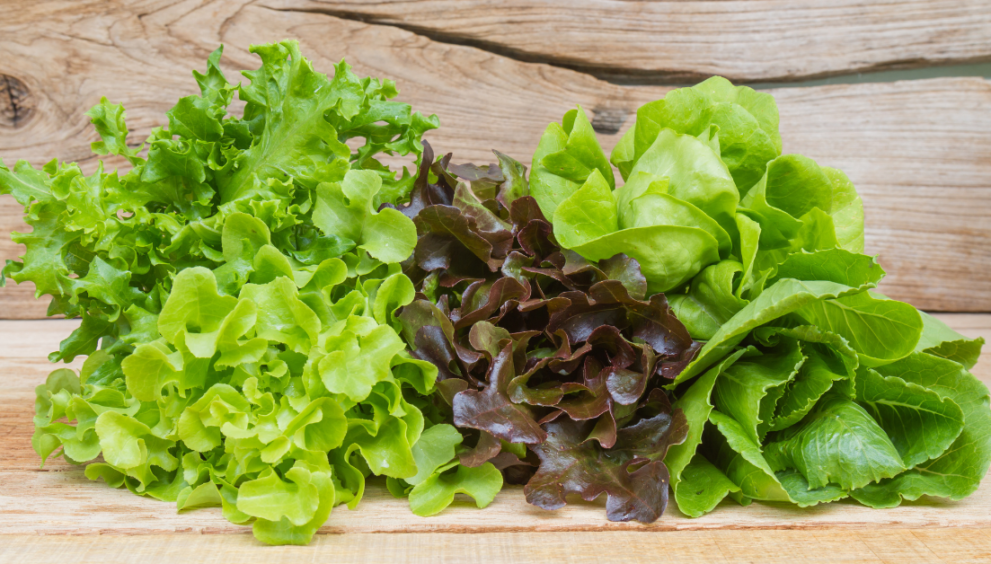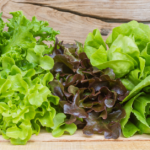The Complete Guide to Bib Lettuce: Ultimate Companion for a Healthier Lifestyle

Bib lettuce, often referred to as butterhead lettuce, is a leafy green that’s not only delicious but also packed with nutrients. Whether you’re a seasoned chef, a home cook, or someone simply looking to add more greens to your diet, bib is an excellent choice. In this comprehensive guide, we’ll explore everything you need to know about bib lettuce, from its origins and nutritional benefits to how to grow, store, and use it in a variety of dishes. Let’s dive into the world of bib and discover why it’s a must-have in your kitchen.
What is Bib Lettuce?
Bib lettuce, scientifically known as Lactuca sativa, is a type of butterhead lettuce that is characterized by its soft, tender leaves and mild, slightly sweet flavor. The leaves form a loose, round head that resembles a rose, with the inner leaves often being lighter in color and more tender than the outer ones. Bib lettuce is a versatile green that can be used in salads, wraps, sandwiches, and even as a garnish.
Varieties of Bib Lettuce:
Bib lettuce comes in several varieties, each with its own unique flavor and texture:
- Boston Lettuce: A popular variety of bib with larger, looser leaves that are perfect for wrapping.
- Buttercrunch: Known for its crisp texture and sweet flavor, this variety is often used in salads.
- Tango: A more delicate variety with frilly leaves, ideal for adding texture to dishes.
Nutritional Benefits of Bib Lettuce:
Bib lettuce is not only delicious but also a powerhouse of nutrition. Here’s a look at some of the key nutrients found in this leafy green:
- Vitamins: Bib lettuce is rich in vitamins A, C, and K. Vitamin A supports eye health, vitamin C boosts the immune system, and vitamin K is essential for bone health.
- Minerals: This lettuce provides a good amount of folate, potassium, and iron, which are important for overall health and wellbeing.
- Antioxidants: it contains antioxidants like beta-carotene, which help protect the body from harmful free radicals.
- Low in Calories: With its low calorie count, it is an excellent addition to any diet, especially for those looking to maintain or lose weight.
Growing Bib Lettuce: A Gardener’s Guide:
Growing your own bib is rewarding and relatively easy. Whether you have a large garden or just a small balcony, you can cultivate this leafy green at home. Here’s how:
Planting Bib Lettuce:
- Choose the Right Location: Bib lettuce thrives in cool weather, so it’s best to plant it in early spring or late summer. Choose a spot with partial shade to protect the delicate leaves from intense sun.
- Soil Preparation: The soil should be rich, well-drained, and slightly acidic with a pH between 6.0 and 6.5. Add compost to improve soil fertility.
- Sowing Seeds: Sow the seeds directly into the soil about 1/4 inch deep and 6-8 inches apart. If starting indoors, transplant the seedlings when they have 3-4 leaves.
Caring for Your Bib Lettuce:
- Watering: Keep the soil consistently moist, but avoid overwatering. it has shallow roots, so it’s important to water regularly, especially during dry spells.
- Fertilizing: Use a balanced fertilizer every two weeks to promote healthy growth. Organic options like compost tea or fish emulsion work well.
- Pest Control: Common pests include aphids, slugs, and snails. Use natural remedies like neem oil or diatomaceous earth to keep these pests at bay.
Harvesting Bib Lettuce:
- When to Harvest: Bib lettuce can be harvested as soon as the leaves are large enough to eat, usually about 55-70 days after planting.
- How to Harvest: Cut the outer leaves first, allowing the inner leaves to continue growing. Alternatively, you can harvest the entire head by cutting it at the base.
Storing and Preserving :
Once harvested, proper storage is essential to keep your bib fresh and crisp. Here are some tips:
Storing Fresh Bib Lettuce:
- Refrigeration: Store in the refrigerator’s crisper drawer. Place it in a perforated plastic bag or wrap it in a damp paper towel to maintain moisture.
- Avoid Washing Before Storage: Washing the lettuce before storing can cause it to wilt. Instead, wash it just before use.
- Use Within a Week: For the best flavor and texture, use your bib within a week of harvesting.
Preserving Bib Lettuce:
While bib is best enjoyed fresh, there are ways to preserve it for later use:
- Freezing: Blanch the leaves briefly in boiling water, then plunge them into ice water. Drain and freeze the leaves in a single layer on a baking sheet before transferring them to a freezer bag.
- Dehydrating: Dry the leaves using a food dehydrator or a low oven setting. Once fully dried, store them in an airtight container for use in soups and stews.
Culinary Uses of Bib Lettuce:
Bib lettuce’s tender texture and mild flavor make it a versatile ingredient in the kitchen. Here are some creative ways to use it:
Salads:
Bib lettuce is a salad staple, offering a perfect balance of crispness and tenderness. Pair it with ingredients like:
- Citrus Fruits: Add slices of orange, grapefruit, or lemon for a refreshing twist.
- Nuts and Seeds: Sprinkle on almonds, walnuts, or sunflower seeds for added crunch.
- Cheeses: Feta, goat cheese, or blue cheese complement bib beautifully.
Wraps and Rolls:
The large, pliable leaves of bib make them ideal for wraps. Fill them with:
- Grilled Chicken or Tofu: Add a protein-rich filling for a satisfying meal.
- Fresh Vegetables: Cucumber, avocado, and shredded carrots add crunch and flavor.
- Herbs and Spices: Fresh basil, cilantro, or mint can elevate the taste.
Sandwiches and Burgers:
Use as a crisp, fresh alternative to iceberg lettuce in sandwiches and burgers. Its mild flavor complements:
- Roast Beef or Turkey: Add a slice for a refreshing crunch.
- Vegetarian Options: Pair with grilled portobello mushrooms or veggie patties.
- Condiments: Bib lettuce pairs well with a variety of sauces, from mustard to aioli.
Garnishes and Decorations:
Bib lettuce’s attractive, rounded leaves can also be used as a garnish for:
- Plated Dishes: Arrange the leaves around the edge of a plate for an elegant presentation.
- Appetizers: Use small leaves to hold bite-sized appetizers or dips.
Health Benefits of Bib Lettuce:
In addition to its culinary versatility, bib lettuce offers several health benefits:
Promotes Heart Health:
It is rich in potassium, which helps regulate blood pressure and supports heart health. The antioxidants in bib also help reduce inflammation, which is linked to cardiovascular disease.
Supports Digestive Health:
The fiber content in bib lettuce aids digestion by promoting regular bowel movements and preventing constipation. It also supports the growth of healthy gut bacteria.
Boosts Immunity:
The high levels of vitamin C in contribute to a stronger immune system, helping the body fight off infections and illnesses.
Supports Weight Management:
With its low calorie and high water content is a great choice for those looking to manage their weight. It provides a satisfying crunch without adding many calories to your meal.
Supports Eye Health:
Bib lettuce is a good source of vitamin A, which is essential for maintaining healthy vision. Regular consumption of bib lettuce can help prevent eye conditions like cataracts and age-related macular degeneration.
Environmental Impact of Bib Lettuce:
Growing and consuming also has environmental implications. Here’s how you can enjoy this green in an eco-friendly way:
Sustainable Growing Practices:
- Organic Farming: Choose organic to support farming practices that avoid harmful pesticides and fertilizers.
- Water Conservation: It requires regular watering, so use rainwater or drip irrigation to reduce water waste.
Reducing Food Waste:
- Composting: If you have leftover that’s past its prime, consider composting it instead of throwing it away. This enriches the soil and reduces landfill waste.
- Creative Use of Scraps: Don’t discard the outer leaves or stems – use them in soups, smoothies, or as a base for vegetable stocks.
Supporting Local Farmers:
- Buy Local: Purchase bib lettuce from local farmers’ markets to reduce the carbon footprint associated with transportation.
- Grow Your Own: Growing bib at home is a rewarding way to ensure fresh, sustainable greens year-round.
Conclusion:
Why Bib Lettuce Should Be Your Go-To Gree:
It is more than just a salad green – it’s a versatile, nutritious, and environmentally friendly choice that can enhance your meals and support your health. Whether you’re growing it in your garden, storing it in your fridge, or incorporating it into your favorite dishes, bib is a leafy green that deserves a place in your kitchen.
With its soft, buttery leaves and mild flavor, bib lettuce is perfect for salads, wraps, sandwiches, and more. Its rich nutritional profile, including vitamins A, C, and K, as well as essential minerals, makes it a valuable addition to a balanced diet.
By growing your own bib lettuce or supporting local organic farmers, you can enjoy this delicious green while making eco







